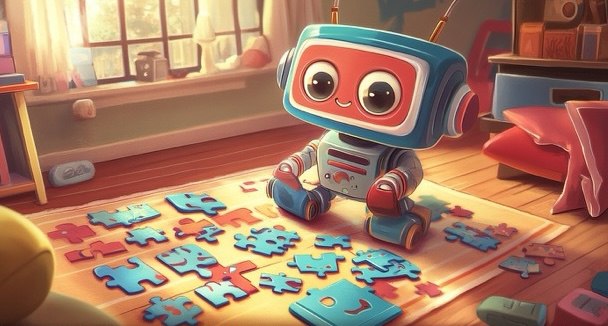
How to Generate Photos with Neural Networks
Generating images using artificial intelligence is no longer a novelty. Even many online news publications use AI-generated pictures in their articles. While artificial photos used to look unnatural, more and more tools are now available that generate realistic images, sometimes indistinguishable from photographs, or unique stylized artworks. This article will explore how to generate photos using neural networks and why this is useful.
Why It Is Needed
Generated images are used in various fields. For example, web designers use neural networks to create conceptual drawings, logos, and project visualizations. Marketers and advertising agencies leverage AI technologies to create eye-catching images that attract their target audience. Game developers generate detailed images, textures, backgrounds, locations, and character models.
Ordinary users can generate photos for social networks or blogs, make personalized greeting cards, and invitations. Professional photographers retouch photos, add or remove elements, change backgrounds, and create photo collages.
How to Generate
Image generation is available through text prompts and pre-existing photographs. You can input a prompt to get an image in the desired format on a specific topic. For example, enter a text: “Landscape with a pink-purple sunset in the style of impressionism.” The program will provide an image based on the given prompt.
To generate a photo using a neural network based on a photograph, you need to upload the picture to a service, choose a style, or add a text description. For instance, you can request the program to change the background, stylize the image as a Van Gogh painting, age the photo, or add details.
The neural network analyzes the structure of the original picture, adapts it to the chosen style, while preserving essential elements of the original. This way, you can improve old photos, restore damaged ones, or create unique avatars for social networks.
Which Services to Use
New services for image generation are emerging almost daily. Many platforms are free or offer a trial period. We have prepared a list of the best neural networks that can generate photos:
- Microsoft Designer – a free application for generating and editing photos;
- AI2image – an AI-based tool for image creation with free access;
- Midjourney – a popular program for creating realistic drawings, available for free;
- DALL·E – a neural network for image generation with a paid subscription and limited free access;
- Dream studio – an online tool for creating drawings using text commands or original photos;
- RunwayML – a video generator based on images and text requests with a demo version;
- YandexART – a free neural network by Yandex that processes text requests and original images;
- DeepArt – an online platform capable of transforming ordinary photos into works of art using AI;
- Artbreeder – a service specializing in creating portraits, allowing users to mix photos or generate them based on text descriptions.
The latest version of ChatGPT is now capable of generating images using built-in tools. You can describe the image you want to generate, specify the style, scene details, colors, and other parameters to receive the final picture. Additionally, the chatbot can compose prompts for generation on its own.
Useful Tips
As with any other AI models, image generators require more input data to produce exactly the image you want. If you send a text request, properly compose prompts and set configurations.
Recommendations for generating photos online with a neural network:
- Choose a suitable service that meets your requirements.
- If you need a generator for professional use, it is better to use a paid version with an extended set of tools.
- Prepare descriptive and clear prompts or original photo materials.
- Instead of general phrases, add specifics, for example, “Black and white portrait of an elderly woman in a vintage hat” or “Bright realistic photo of a family on the ocean shore.”
- Experiment with different styles to compare several results.
- Change colors, textures, increase or decrease contrast, add new details, or remove unnecessary ones.
- Edit the final photo until you achieve the desired result.
- If you need a photo for print or website upload, ensure it does not contain the program’s watermarks.
Remember that neural network algorithms have limited creative potential, and do not expect genuine masterpieces from them. The quality depends on the training data; the program may not understand the context. Final images often contain imperfections like missing or extra fingers on hands, or identical faces in a crowd, etc.
Conclusions
Artificial intelligence capabilities enable generating a picture from a photo as well as creating an entirely new image from scratch in any style, with diverse shades and textures. While AI tools are still imperfect, new services are regularly emerging that generate more realistic photos, almost indistinguishable from real pictures.

